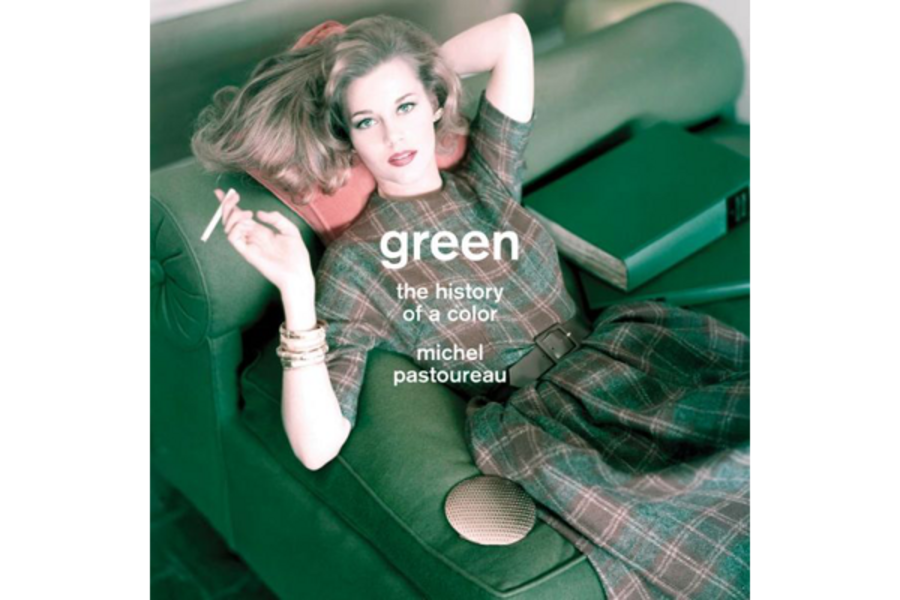'Green' considers the emotional, social, and poetic significance of a very versatile band of the color spectrum
Color talks: Baneful, snobbish, scandal-mongering, modest, salubrious, fellow feeling – a mere soupçon of color’s qualities. Ambiguity: color would not be fixed, literally or figuratively, for the longest time, nor will it ever be, and in Green: The History of a Color, Michel Pastoureau shows all of the possibilities in just one band of the spectrum. Mordants – fixers – are tricky things, as shape-shifting as the symbolic robes of color. Regarding the systems of signification, colors treat them as musical chairs, changing their referents, being good, being bad, being both at once. Add to that an understanding that the antique or medieval eye did not perceive color as we do, its alleged physiological and psychological resonances profoundly out of synch with ours; it was once thought that our none-too-distant cousins were colorblind. “Our knowledge [of color], our sensibility, our present-day ‘truths’ were not those of yesterday and will not be those of tomorrow.”
Pastoureau is a spirited but learned writer, as thrilled with oddities as he is to connect dots. He is happy in his work, and it is communicably seductive. He is a skeptic in the Mary Beard fashion; suggestions are fine, but claims better have some meaty provenance. “There is still an immense gap between the wealth of documentation, the importance of color in all the social codes, and the too rare studies we have at our disposal.” “Given the current state of our knowledge, we cannot answer that question.” Pastoureau could have put that on a loop. Yet, he is never downbeat, for he is onto the birth of something, a glimpse into how the human mind has worked through the ages.
You may have already met M. Pastoureau, who is the director of studies at the École Pratique des Hautes Études de la Sorbonne. A director of studies but more of a chercheur – it is no stretch to imagine him a medieval librarian, toiling in a monastery tower, going to the source to sound the pealing, historiographical note. He examines green from many angles – rarely as a fragment of light but as a social phenomenon, a culturally sculpted perception: “For the historian the issues of a color are essentially social issues” (society gives color its meaning, codes, values, uses, and stakes; colors speak like Charlie McCarthy – with manipulated tongue [but not always]) – often in combination with or opposed to other colors, while a color’s distillate, its elemental being, remains inconceivable outside its embodiment. Pastoureau has written four dozen or so books, including "Black" and "Blue," with "Red" and "Yellow" in the oven, which have and promise to take the same tack as "Green" the enchanter.
Pastoureau’s approach is elegant and revelatory. It is chronological but with as many divergent branches as Charlemagne’s family tree. First he situates the colors in their immediate time/space universe, accounting for their lexicon, their chemistry and manufacture, dyeing (in use there is meaning), dress systems and codes, color in everyday life, color in social mythology, and the rules and moral standards of the society, authorities, and church. And if Pastoureau has not breathed enough dust in that medieval tower gathering this elusive knowledge, now he must track color’s changes as it pushes forward and recedes, takes advantage of innovations, and enters into mergers with other colors, which is about as simple as following a cougar’s tracks over bedrock after a storm.
But when it comes to color – its bobs and weaves; its social, cultural, scientific import; of getting to the bottom of the matter – Pastoureau is tireless in pursuit.







